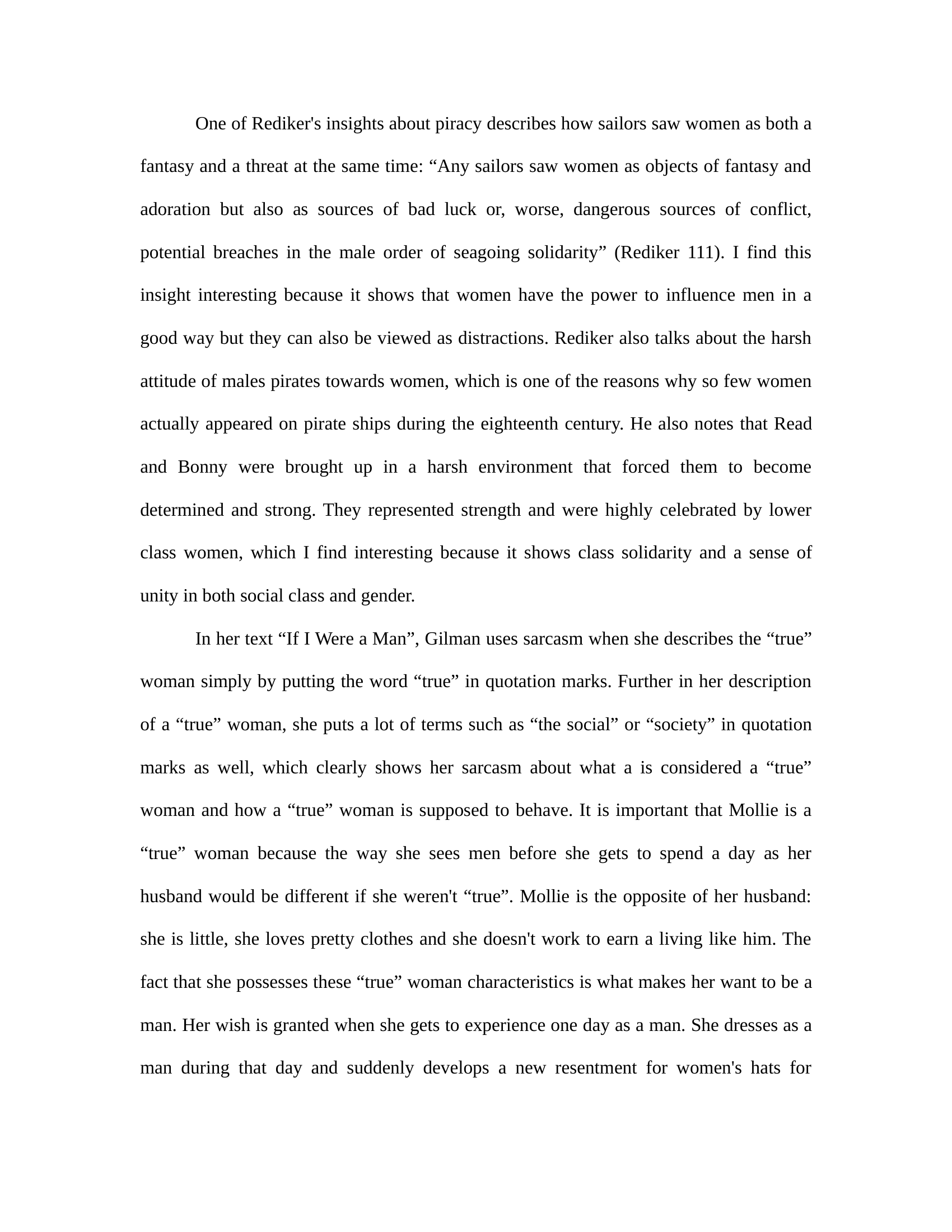Mary Read and Anne Bonny
Publié le 30/01/2013

Extrait du document
«
One of Rediker's insights about piracy describes how sailors saw women as both a
fantasy and a threat at the same time: “Any sailors saw women as objects of fantasy and
adoration but also as sources of bad luck or, worse, dangerous sources of conflict,
potential breaches in the male order of seagoing solidarity” (Rediker 111).
I find this
insight interesting because it shows that women have the power to influence men in a
good way but they can also be viewed as distractions.
Rediker also talks about the harsh
attitude of males pirates towards women, which is one of the reasons why so few women
actually appeared on pirate ships during the eighteenth century.
He also notes that Read
and Bonny were brought up in a harsh environment that forced them to become
determined and strong.
They represented strength and were highly celebrated by lower
class women, which I find interesting because it shows class solidarity and a sense of
unity in both social class and gender.
In her text “If I Were a Man”, Gilman uses sarcasm when she describes the “true”
woman simply by putting the word “true” in quotation marks.
Further in her description
of a “true” woman, she puts a lot of terms such as “the social” or “society” in quotation
marks as well, which clearly shows her sarcasm about what a is considered a “true”
woman and how a “true” woman is supposed to behave.
It is important that Mollie is a
“true” woman because the way she sees men before she gets to spend a day as her
husband would be different if she weren't “true”.
Mollie is the opposite of her husband:
she is little, she loves pretty clothes and she doesn't work to earn a living like him.
The
fact that she possesses these “true” woman characteristics is what makes her want to be a
man.
Her wish is granted when she gets to experience one day as a man.
She dresses as a
man during that day and suddenly develops a new resentment for women's hats for.
»
↓↓↓ APERÇU DU DOCUMENT ↓↓↓
Liens utiles
- Mary Read par Jorge Luis Borges Les données essentielles d'une biographie de
- Elizabeth I I INTRODUCTION Elizabeth I (1533-1603), queen of England and Ireland (1558-1603), daughter of Henry VIII and his second wife, Anne Boleyn.
- Anne Bonny
- Mary Read (HISTOIRE)
- Ideology and Rationality in the History of the Life Sciences

































